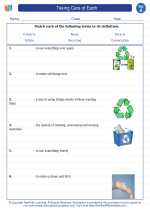Taking Care of Earth -> pollution
Pollution
Pollution is the introduction of harmful substances or products into the environment. These substances can cause harm to living organisms and disrupt the natural balance of ecosystems. Pollution can come from various sources, including human activities, industrial processes, and natural events.
Types of Pollution
There are several types of pollution, including:
- Air Pollution: This type of pollution occurs when harmful gases or particles are released into the air, often from vehicles, industrial processes, and burning of fossil fuels.
- Water Pollution: Water pollution occurs when harmful substances are released into water bodies, such as rivers, lakes, and oceans, leading to contamination of the water and harm to aquatic life.
- Soil Pollution: Soil pollution occurs when hazardous chemicals, pesticides, or industrial waste contaminate the soil, affecting the quality of the soil and harming plant and animal life.
- Noise Pollution: This type of pollution refers to the presence of excessive or disturbing noise in the environment, often caused by industrial activities, transportation, or urban development.
- Light Pollution: Light pollution occurs when artificial light disrupts the natural darkness of the environment, affecting ecosystems and wildlife.
Effects of Pollution
The effects of pollution can be detrimental to the environment and living organisms. Some of the common effects of pollution include:
- Damage to ecosystems and biodiversity
- Health problems for humans and wildlife
- Contamination of water and food sources
- Climate change and global warming
- Disruption of natural habitats
Preventing Pollution
Preventing pollution is crucial for maintaining a healthy environment. Some ways to prevent pollution include:
- Using renewable energy sources
- Reducing, reusing, and recycling materials
- Conserving water and energy
- Proper disposal of waste and hazardous materials
- Supporting environmental regulations and policies
Study Guide
To study pollution, it's important to understand the different types of pollution, their causes, effects, and potential solutions. Here are some key points to focus on:
- Identify and describe the main types of pollution (air, water, soil, noise, light).
- Explain the sources and causes of pollution in each category.
- Discuss the effects of pollution on ecosystems, human health, and wildlife.
- Explore potential solutions and actions to prevent pollution and promote environmental sustainability.
- Research specific examples of pollution incidents and their impact on the environment.
Understanding pollution is essential for promoting environmental awareness and taking actions to protect the planet and its inhabitants from the harmful effects of pollution.
[Pollution] Related Worksheets and Study Guides:
.◂Science Worksheets and Study Guides First Grade. Taking Care of Earth

 Worksheet/Answer key
Worksheet/Answer key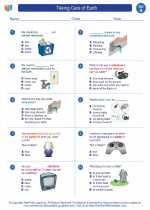
 Worksheet/Answer key
Worksheet/Answer key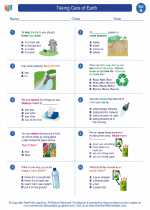
 Worksheet/Answer key
Worksheet/Answer key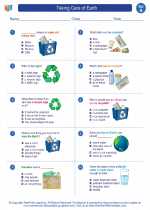
 Vocabulary/Answer key
Vocabulary/Answer key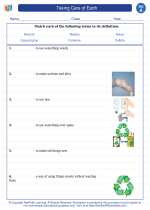
 Vocabulary/Answer key
Vocabulary/Answer key